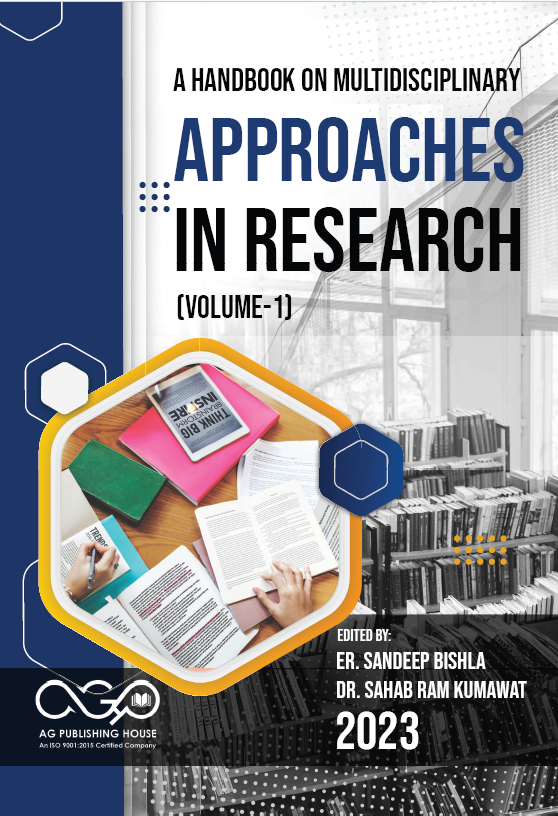Flipped Classroom Method in enhancing Computer Self-Efficacy among pre service teachers
Keywords:
Flipped classroom approach, Pre-service teachers, Computer self-efficacy, Fliped learningAbstract
The goal of flipped classroom strategy is to make better use of class time via a more interactive, student-centered method. Many academic fields have lately been interested in this method, which has traditionally been used in Physical Sciences. The rapidly spreading practice of flipping the classroom is not yet widely accepted in the United States. The objective of the research is to highlight its usefulness in the classroom and get wider recognition among academics. To that end, the research examined the flipped classroom method and its benefits and drawbacks, as well as the technological models that support it. Increased teacher-student connection, flexibility in when and where students may access course materials, time savings (especially during practice), a more student-centered approach, and higher levels of engagement are just a few of the many benefits of flipped classroom paradigm. There are various issues with this approach as well. Technology needs, lack of video viewing, low class attendance, and less student-teacher engagement, particularly in non-classroom settings, are all factors.
References
[1] Al, H., Aizat, S., Ahmed, S., & Alzahrani, I. (2019). A flipped classroom model in higher education : a review of the evidence across disciplines. In Educational Technology Research and Development (Issue 0123456789). Springer US. https://doi.org/10.1007/s11423-019-09718-8
[2] Almodaires, A. A., Alayyar, G. M., Almsaud, T. O., & Almutairi, F. M. (2019). The Effectiveness of Flipped Learning : A Quasi-Experimental Study of the Perceptions of Kuwaiti Pre-Service Teachers. 12(1), 10-23. https://doi.org/10.5539/ies.v12n1p10
[3] Chibisa, A., Tshabalala, M. G., & Maphalala, M. C. (2021). Pre-Service Teachers' Computer Self-Efficacy and the Use of Computers. International Journal of Learning, Teaching and Educational Research, 20(11), 325-345. https://doi.org/10.26803/ijlter.20.11.18
[4] Ding, L., & Hong, Z. (2023). On the Relationship Between Pre-service Teachers' Sense of Self-efficacy and Emotions in the Integration of Technology in Their Teacher Developmental Programs. Asia-Pacific Education Researcher, July. https://doi.org/10.1007/s40299-023-00758-6
[5] Galindo-dominguez, H. (2021). Flipped Classroom in the Educational System : Trend or Effective Pedagogical Model Compared to Other Methodologies ? Flipped Classroom in the Educational System : Trend or Effective Pedagogical Model Compared to Other Methodologies ? April.
[6] Han, H., & Røkenes, F. M. (2020). Flipped Classroom in Teacher Education: A Scoping Review. Frontiers in Education, 5(November). https://doi.org/10.3389/feduc.2020.601593
[7] Kadıoğlu, N., & Oskay, Ö. Ö. (2023). T HE E FFECT OF P REPARING L ESSON P LANS IN O NLINE F LIPPED L EARNING M ODEL ON P RE -S ERVICE T EACHERS ' S ELF -E FFICACY L EVELS OF TPACK. 13(1), 147-169. https://doi.org/10.52634/mier/2023/v13/i1/2408
[8] Kurt, G. (2017). Implementing the flipped classroom in teacher education: Evidence from Turkey. Educational Technology and Society, 20(1), 211-221.
[9] Li, Y. Bin, Zheng, W. Z., & Yang, F. (2017). Cooperation learning of flip teaching style on the MBA mathematics education efficiency. Eurasia Journal of Mathematics, Science and Technology Education, 13(10), 6963-6972. https://doi.org/10.12973/ejmste/76878
[10] Rasheed, R. A., Kamsin, A., Abdullah, N. A., Kakudi, H. A., Ali, A. S., Musa, A. S., & Yahaya, A. S. (2020). Self-regulated learning in flipped classrooms: A systematic literature review. International Journal of Information and Education Technology, 10(11), 848-853. https://doi.org/10.18178/ijiet.2020.10.11.1469
[11] Shnai, I. (2017). Systematic review of challenges and gaps in flipped classroom implementation: Toward future model enhancement. Proceedings of the European Conference on E-Learning, ECEL, 2010-Octob(October), 484-490.
[12] Smith, J. J., & Greene, H. C. (2013). Pre-service teachers use e-learning technologies to enhance their learning. Journal of Information Technology Education:Research, 12(1), 121-140. https://doi.org/10.28945/1790
[13] Taşpolat, A., Özdamli, F., & Soykan, E. (2021). Programming Language Training With the Flipped Classroom Model. SAGE Open, 11(2). https://doi.org/10.1177/21582440211021403
[14] Zhao, L., Liu, X., & Su, Y. S. (2021). The differentiate effect of self-efficacy, motivation, and satisfaction on pre-service teacher students' learning achievement in a flipped classroom: A case of a modern educational technology course. Sustainability (Switzerland), 13(5), 1-15. https://doi.org/10.3390/su13052888
[15] Zheng, L., Bhagat, K. K., Zhen, Y., & Zhang, X. (2020). The effectiveness of the flipped classroom on students' learning achievement and learning motivation: A meta-analysijs. Educational Technology and Society, 23(1), 1-15.




